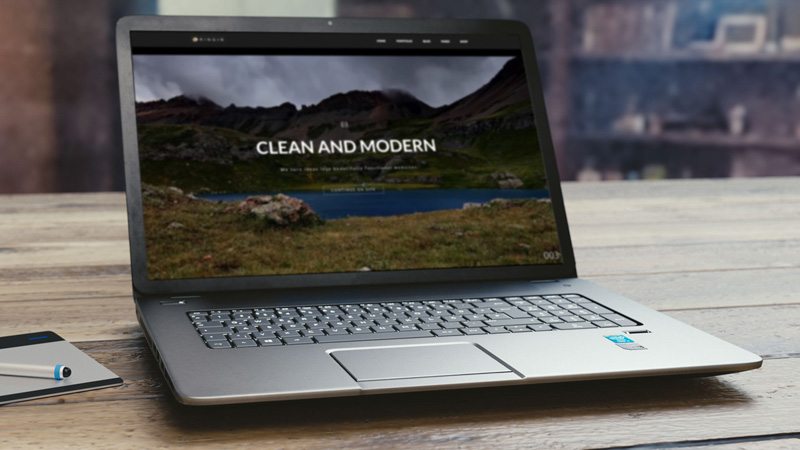One of the more recent trends in website design is the use of video backgrounds on the home page. The concept being, large moving images will draw the viewer’s eye to a call-to-action. But are video backgrounds a good idea?

Many people think that trendy video backgrounds help a website standout in a crowd. The large moving images draw the viewer in to create an engaging experience. And the longer someone stays on your site, the better it looks for SEO, right? But in reality they are distracting the viewer from the main message and the reason they came to your site in the first place.
When someone visits your website you only have 5 seconds to capture their attention. You don’t want that time spent watching a video that was meant as a design element. You want the visitor to read your message and take action. If they can’t determine what your company is about and what they are supposed to do next within that 5 seconds, you will most likely lose them.
Why You Should Eliminate Video Backgrounds
Even though they may look cool and be part of a design trend right now, here are a few reasons why you should eliminate them from your website.
- Video backgrounds increase loading time for a page
- They distract from the primary message/call-to-action
- Autoplay videos are being blocked by web browsers
- Videos use more data on mobile devices
Design trends come and go, and in the world of web design those trends move at lightening speed. In reality a website needs to be redesigned yearly to keep up with changing trends and technologies, but this is not possible for most small businesses. Sometimes jumping on these trends can be more harmful to your business in the long run than the benefits gained in the short term.
If you’re not a cutting edge company that needs to keep up with the latest trends, then our recommendation is to consider a more evergreen approach to design. Good clean design will allow businesses to extend their website lifecycle two or three years before a redesign is needed.


 Webmasters and site owners around the world started receiving emails from Google Search Console stating that their visitors will begin seeing NOT SECURE warnings when viewing their sites.
Webmasters and site owners around the world started receiving emails from Google Search Console stating that their visitors will begin seeing NOT SECURE warnings when viewing their sites.

 July 12, 2017 – Some of the biggest names online are coming together to help protect our internet. Amazon, Kickstarter, Twitter, Etsy, Netflix, and many more are joining the July 12th protest against the FCC’s attack on Net Neutrality.
July 12, 2017 – Some of the biggest names online are coming together to help protect our internet. Amazon, Kickstarter, Twitter, Etsy, Netflix, and many more are joining the July 12th protest against the FCC’s attack on Net Neutrality. WordPress
WordPress
 WordPress issued a security/maintenance release, version 4.7.5, and is now available for update.
WordPress issued a security/maintenance release, version 4.7.5, and is now available for update. We’ve seen a few updates to the WordPress core over the last several months, but version 4.8 will be the first major release in 2017. The focus of this update is to refine existing features and prepare for the new Gutenberg editor. Additional features planned for this release include:
We’ve seen a few updates to the WordPress core over the last several months, but version 4.8 will be the first major release in 2017. The focus of this update is to refine existing features and prepare for the new Gutenberg editor. Additional features planned for this release include: If you’re not a coder, just trying to add some formatted text to a sidebar can be a pain. How do you format a link? How do you make text Bold? Many people just create a Post or Page and use the Visual Editor to create their content and then copy the code in to a standard Text Widget. In version 4.8 there will be a simple visual editor built-in to the Text Widget where you can do some basic formatting. This will be so much more user friendly to the non-coder.
If you’re not a coder, just trying to add some formatted text to a sidebar can be a pain. How do you format a link? How do you make text Bold? Many people just create a Post or Page and use the Visual Editor to create their content and then copy the code in to a standard Text Widget. In version 4.8 there will be a simple visual editor built-in to the Text Widget where you can do some basic formatting. This will be so much more user friendly to the non-coder. We love
We love 
 It’s official, Matt Mullenweg, founding developer of WordPress, posted that WordPress will be ending support Internet Explorer versions 8, 9, and 10 starting with WordPresss 4.8.
It’s official, Matt Mullenweg, founding developer of WordPress, posted that WordPress will be ending support Internet Explorer versions 8, 9, and 10 starting with WordPresss 4.8.


